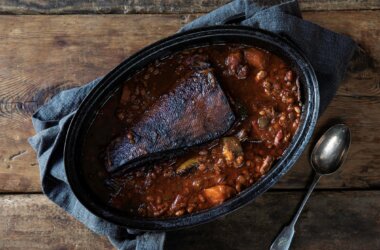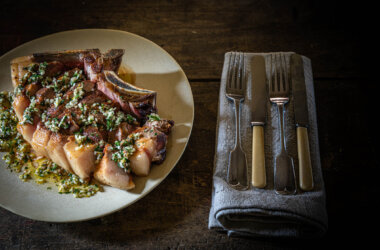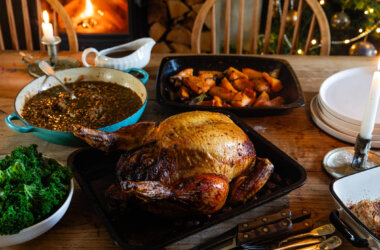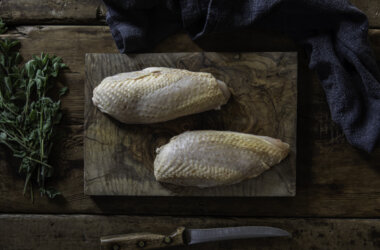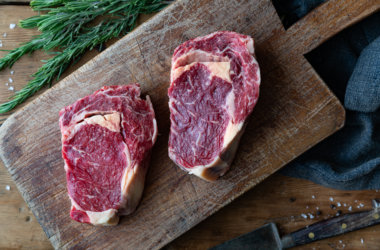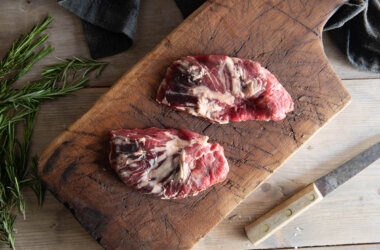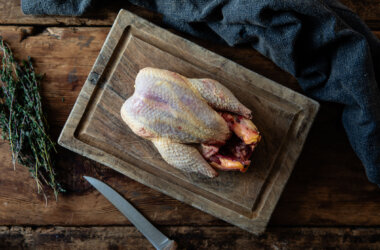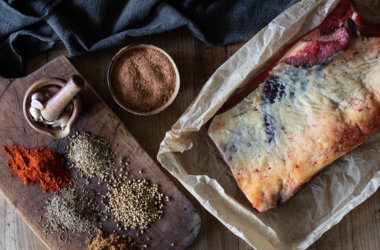Veal may be the traditional choice for ossobuco, but lamb shines as a delicious alternative in this lamb ossobuco recipe. Enriched with the robust flavours of anchovy, rosemary, and Kalamata olives, this braise delivers a taste sensation that surpasses expectations. Each ingredient in this dish plays a vital role, but it’s the quality of the olives that truly elevates the flavour. Only olives grown in the southern region of Greece can rightfully be called Kalamata. These olives boast a unique, deep aubergine colour and almond shape, offering a succulent and unparalleled flavour sensation. Trust me, the divine taste they impart is going to do this dish justice – I promise you won’t regret it.
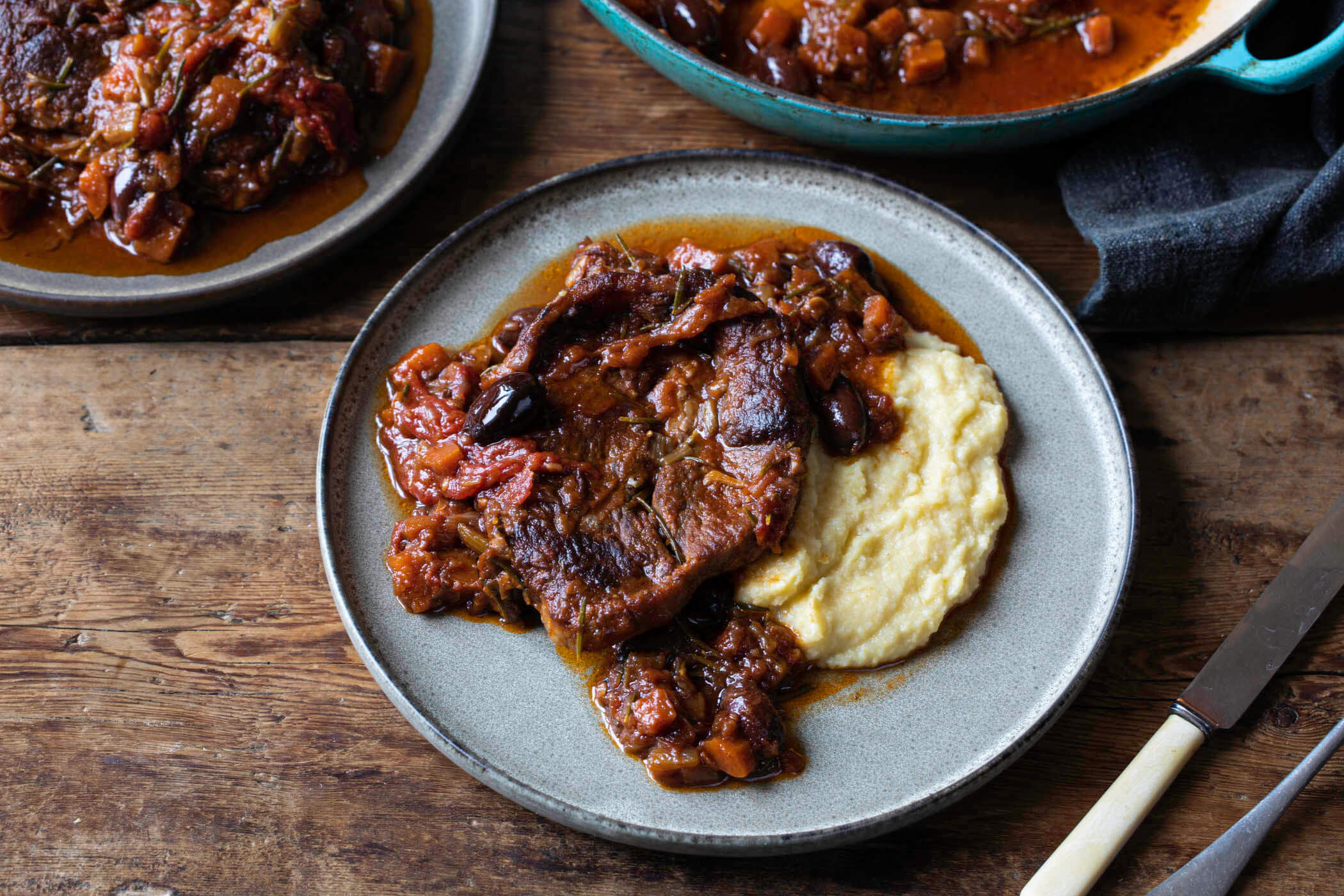
Serves 2 (hungry people)
Ingredients
For the polenta
Method
First the braise:
- You will need a large, heavy-bottomed pan. Place it over a medium heat, with 2-tablespoons of olive oil. Season the ossobuco with salt and then begin to brown them off on both sides in the pan. Once browned, remove and set to one side.
- Add the onion, carrot, celery, and garlic, plus a good pinch of salt. Sweat off the vegetables over a medium heat, stirring regularly for about 20-minutes. Until they are well softened and just beginning to colour lightly.
- Add the anchovies and red wine and bring to a boil. Then return the ossobuco along with the tomatoes, stock, Kalamata olives, and rosemary.
- Let the pot return to a simmer and maintain a gentle bubble over a low heat for about 2-hours with the lid slightly ajar, stirring delicately at 20-minute intervals so as not to break up the meat.
- After 2-hours, the lamb should be cooked and the sauce beautifully rich and reduced. Check the seasoning and adjust if necessary. If you think the sauce needs a little further reduction, then simply remove the lamb and allow it to bubble away for a little longer.
While that is cooking, begin with the polenta:
- Bring the water and olive oil to a boil. Season with a pinch of salt, and then pour in the polenta, whisking as you go. The whisking will prevent the polenta from forming any lumps.
- Immediately turn the pot down to the lowest heat possible and cook like this for about 40-minutes. Stirring very regularly.
- Add the butter and parmesan and stir as they rapidly melt into the pot, instantly enriching the polenta.
- Check the seasoning and consistency and adjust if necessary. Be careful as it will be molten hot. A little splash of water can be used to loosen it.
- Serve very quickly, as if allowed to cool, polenta can very quickly resemble cement!





